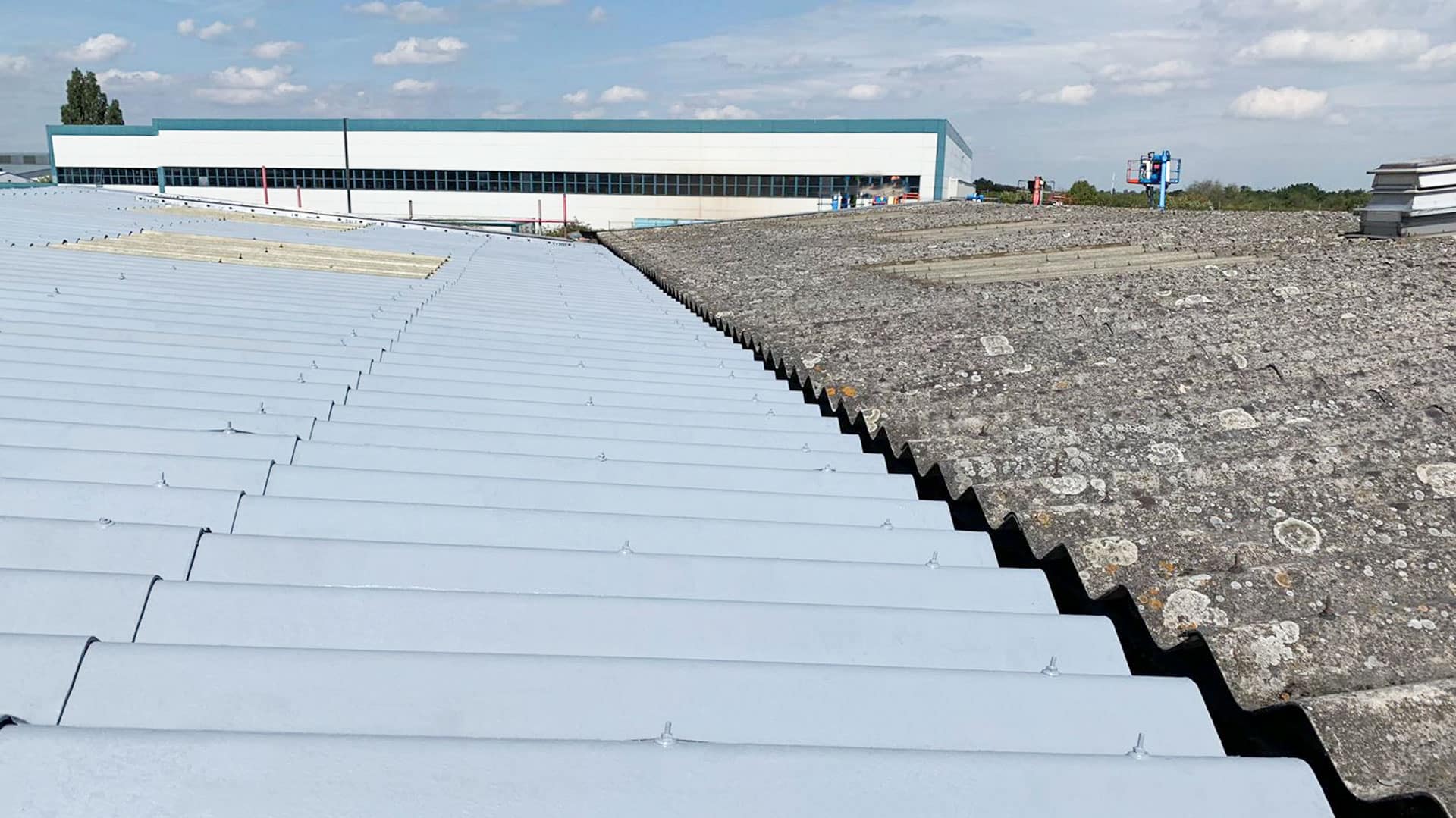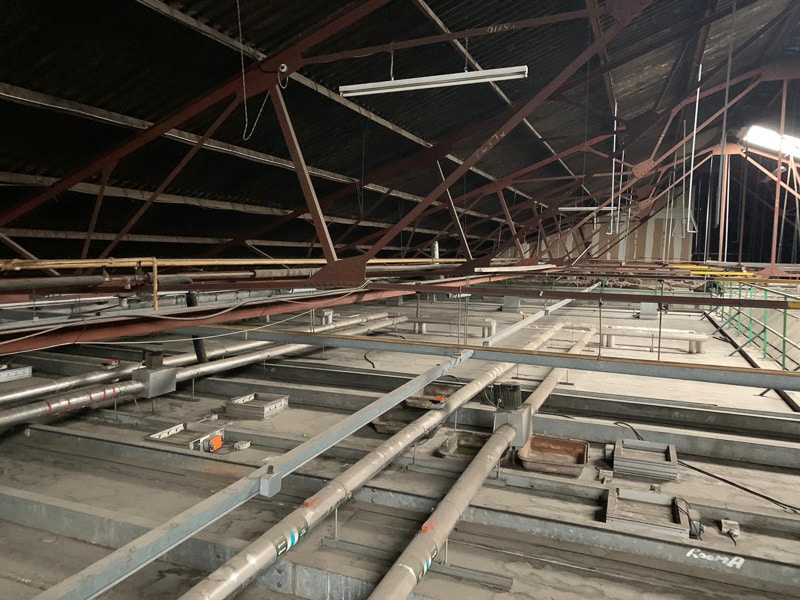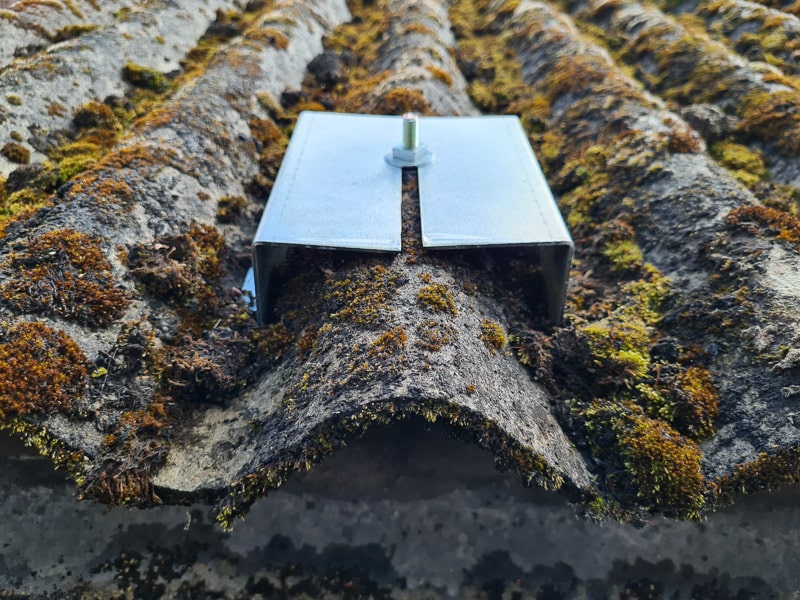Removal, Over-Cladding or Encapsulation?
There are a number of different solutions to dealing with your asbestos roof. Put simply it boils down to either removal, over-cladding or encapsulation. Every project is unique and our Technical Managers are always on hand to help you decide which solution is right for your requirements.
Removal
The complete removal, disposal and replacement of your asbestos roof is certainly the most aggressive solution to the problem. With a completely new roof structure installed, you can take advantage of all the latest roofing materials and technologies to improve your roofs thermal performance, lifespan and visual aesthetic.
It is however also comparatively time-consuming and labour-intensive, causing longer construction times and increased disruption to the site. This and the increased amount of asbestos disposal inevitably make this a costlier proposition.
Over-Cladding
Over-cladding asbestos over-cladding is a fast, safe and far cheaper alternative to costly asbestos removal. Utilising products such as Garland UK’s R-MER CLAD metal roof system, it is now possible to overclad the roof structure whilst leaving the existing asbestos roof in place. Whilst some cleaning may be desirable, over-cladding minimises the need to interfere with the asbestos roof structure.
This is predominantly limited to securing the mechanical fixings, using the latest HSE guidance to suppress dust creation, onto which the new system is installed. This safely encapsulates the asbestos and prevents future damage and deterioration whilst also providing a major aesthetic improvement and allowing for increased insulation, significantly improving the roof’s thermal performance to standard.
Coating
Coating or encapsulation utilises cold-applied liquid systems, such as Garland UK’s Dura-Coat or White Knight, to fully cover and encapsulate the existing asbestos sheets eliminating the risks of airborne asbestos. These innovative solutions provide a fast, safe and far cheaper alternative to costly asbestos removal. There are different benefits to each system, so it is always best to talk to your local Garland Technical Manager to find out what will work best for you.
The existing roof is carefully prepared, repairing minor issues and replacing badly cracked and damaged roof sheets with sheets of a similar profile. Fixing bolts that are damaged are replaced. The roof is then cleaned by asbestos specialists using a dedicated process to clean and prepare asbestos roofing sheets in a safe, streamlined and thorough manner. Finally, the cold-applied liquid system is applied and allowed to cure.





